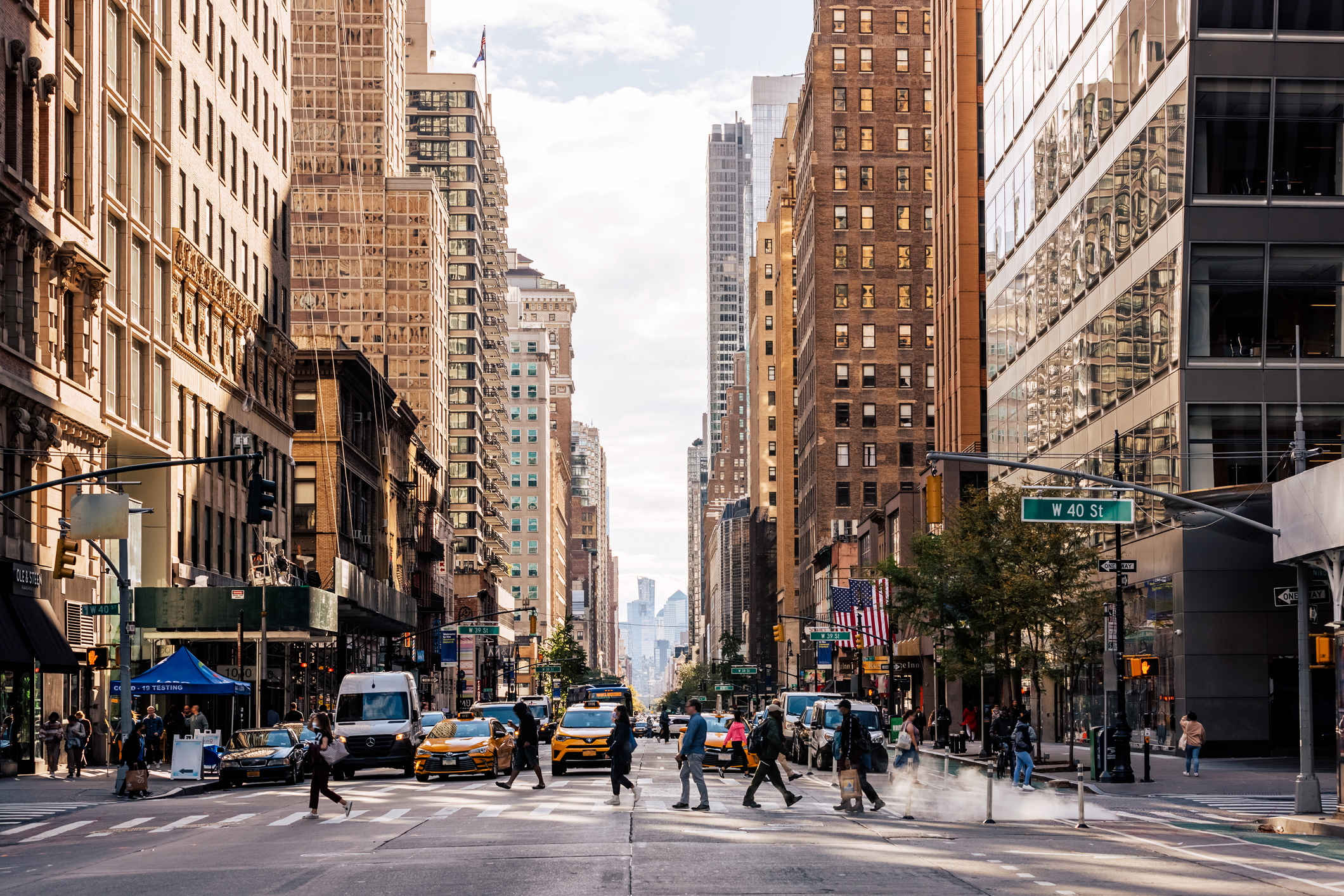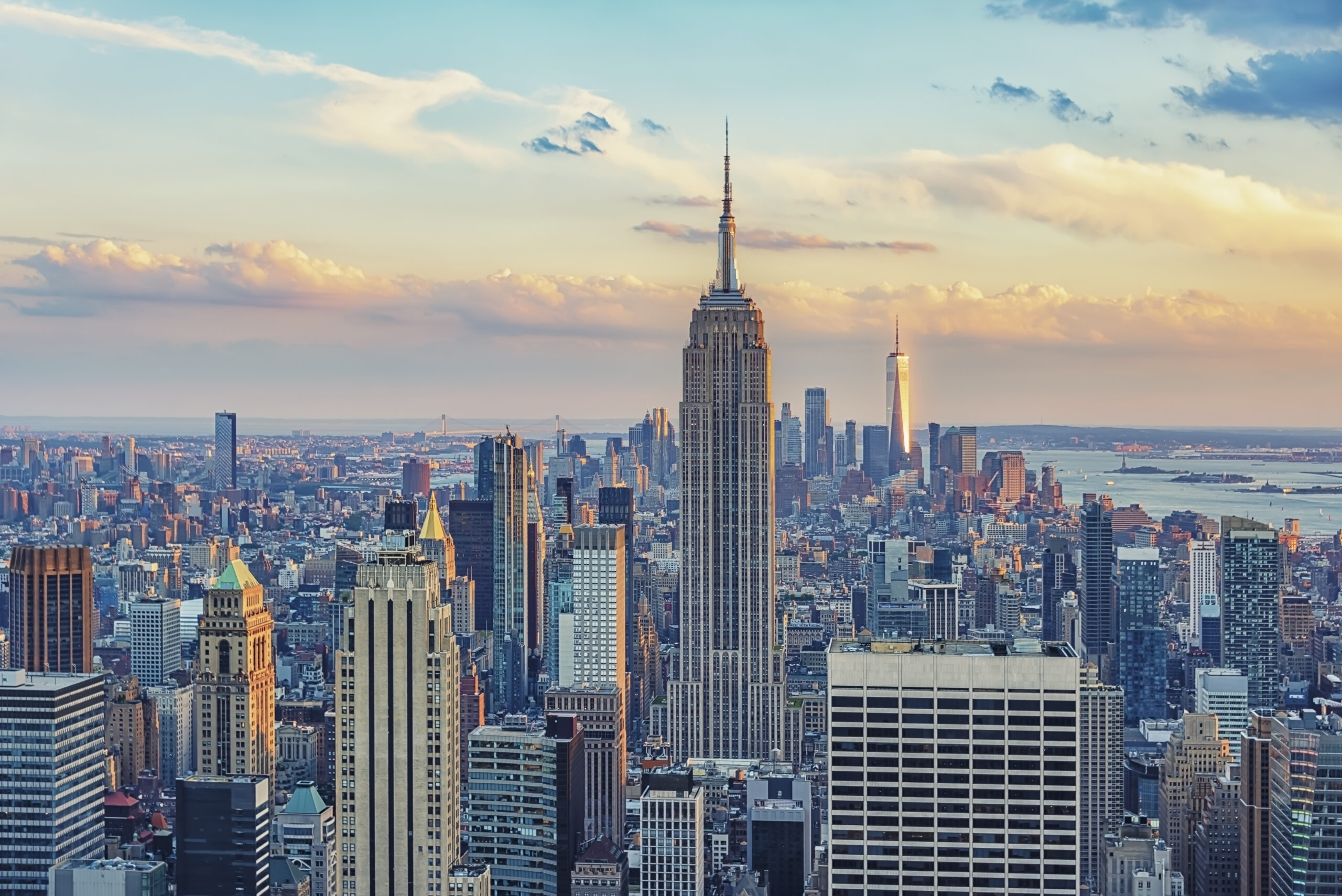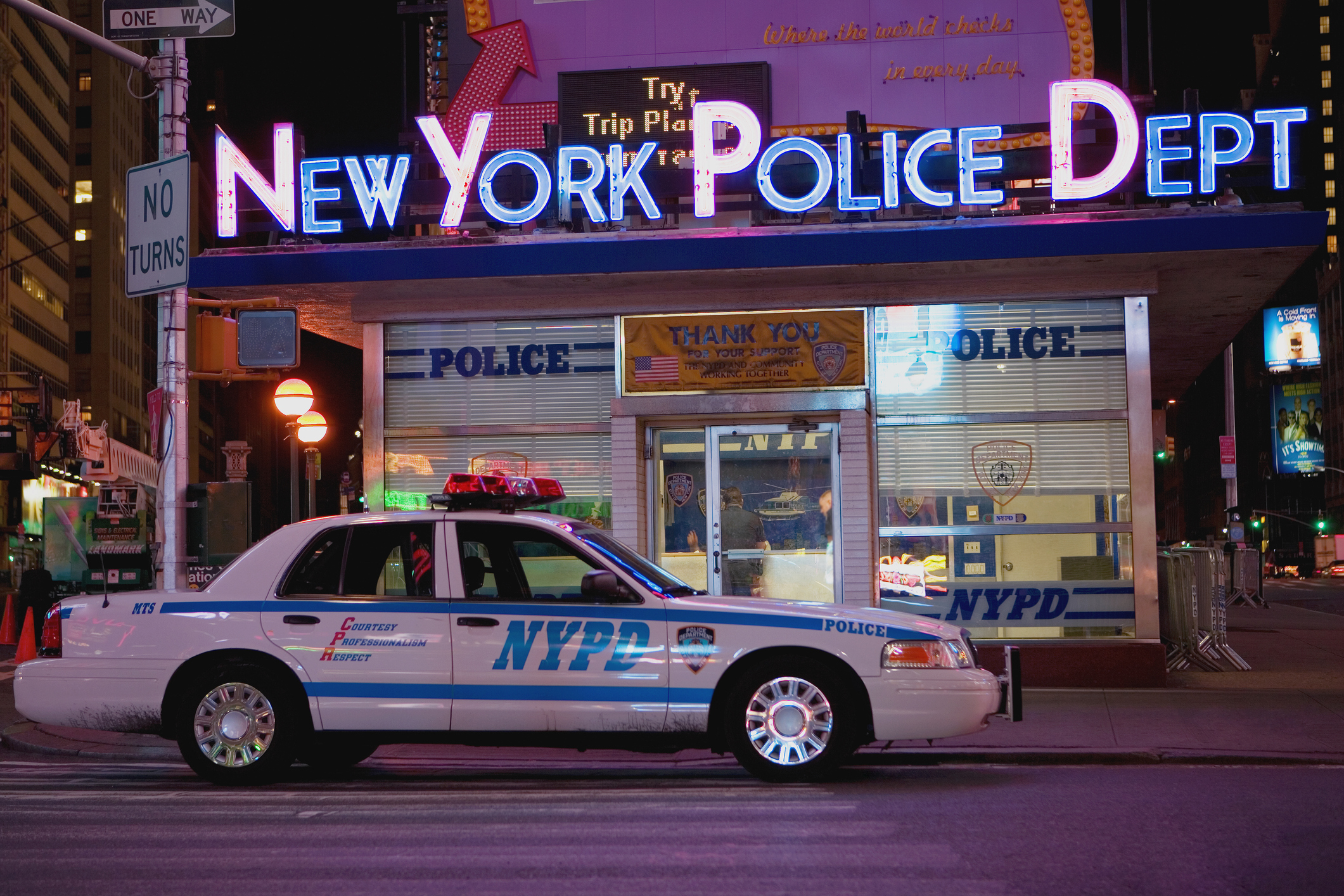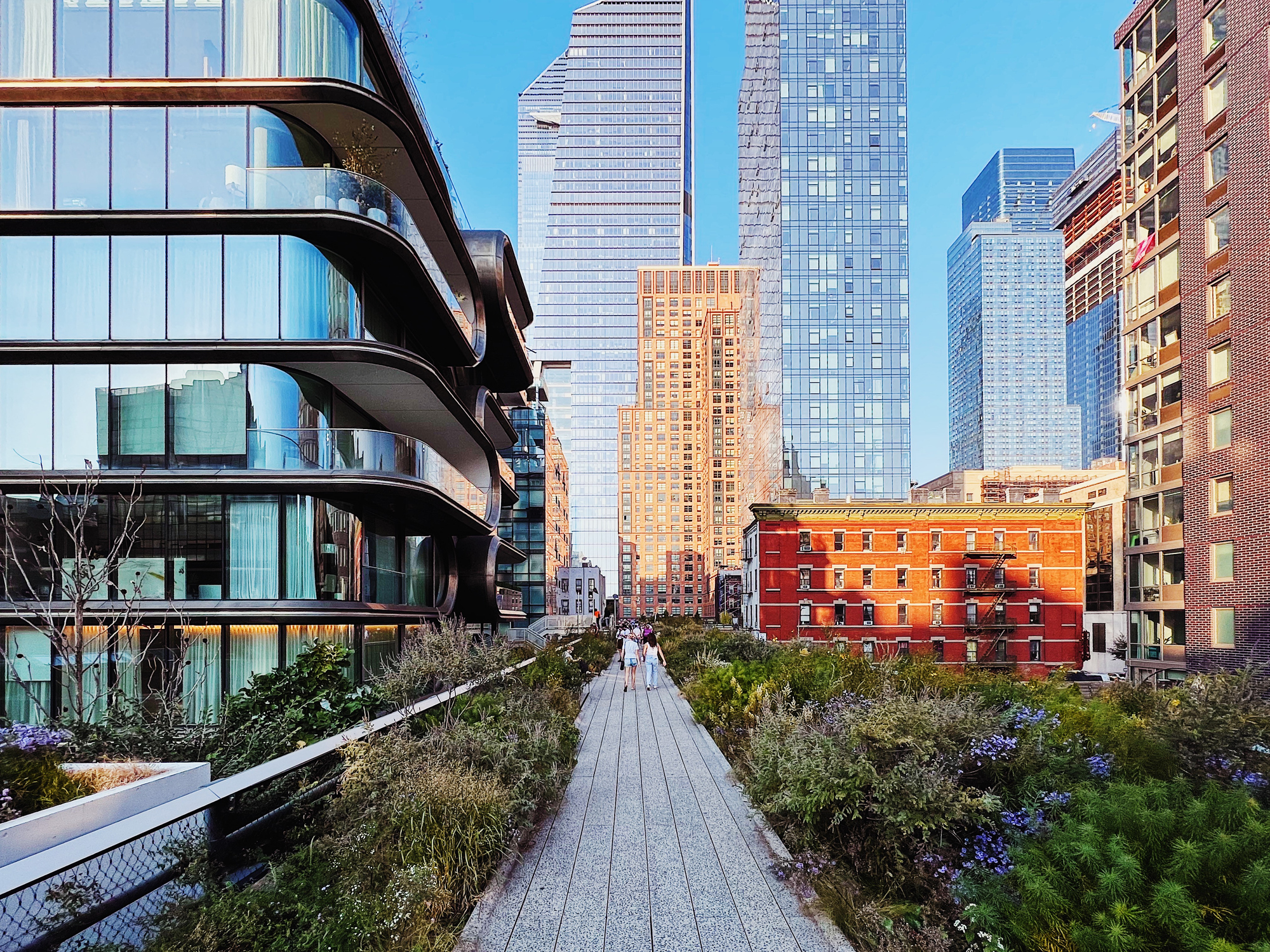After the midterm election, the city and state need to address voters’ bread-and-butter concerns.
The Rise and Fall of New York

An interview with Matthew Taylor, writer and director of a new documentary about the quintessential American city.
Gotham: The Rise and Fall of New York tells the story of New York City’s six mayors from 1966-2013. Crime, homelessness, and racial unrest are among the dysfunctions that have menaced residents and frightened away potential visitors from America’s largest metropolis. These and other problems are returning in force.
In 2022, New York State saw the sharpest population decline in the country, much of it out of the city. New Yorkers, like many residents of the country’s biggest urban centers, are leaving in large numbers in search of safer places to live. So a close look at the city’s renaissance during the 1990s—when a few politicians and analysts managed to bring about sudden and dramatic reform—can be instructive for those hoping to improve the next generation of urban life in America.
The American Mind’s own Seth Barron is interviewed as an expert in the film. Features Editor Spencer Klavan called up writer and director Matthew Taylor to discuss what he learned from the production process, and what New York’s history might reveal about how to turn city life around. Gotham will be on streaming platforms March 21; it is currently available for pre-order on iTunes.
The American Mind: Tell me a little bit about your background as a filmmaker—what got you into this subject in particular?
Matthew Taylor: I actually went to art school: I’m a sculptor and an art theorist, an art historian whose mother worked in Manhattan between 1986 and 1995. So I’m in this very interesting age range: I remember old New York. It’s a myth now if you’re 30 years old, you’ve only seen “nice New York.” But I very clearly remember bad New York, in my younger years. And so my family left the East Coast, went to Saint Louis, but the whole country was in that shape, and so—at the turn the century, turn of the Millennium, I was going to art school. And I was looking for new art materials to experiment with.
Now video had become democratized by Apple and a couple other critical companies that allowed people to experiment with these new formats. So I got into filmmaking. And eventually I moved into documentaries when I moved back to Washington, D.C. in 2002, and I made a number of documentaries. I’ve always loved documentaries, because it’s as close as you get to staying in the fine arts, being a sculptor—because you kind of don’t know what you’re walking into! You don’t know what people are going to say. It’s a very open-ended, cinematic art, whereas in feature films you plan everything before you go in. Whereas documentaries, you don’t know. I have plenty of stories from every film I’ve ever made—serendipity, things happening that have changed the course of the film. Somebody will say something and I’ll think oh, this is actually a better topic than I had planned. I look for those things.
And of course, you know, having grown up in and out of the city, New York City to me is the pinnacle of American innovation. It was the first city to be electrified, the subways, the Brooklyn Bridge—I mean, all of the things that either happened or culminated in New York City. Even the very beginning of the United States itself: the battles fought there by George Washington and so on. It’s a shining city on a hill, an example of American ingenuity at its finest. And so to me, that’s what it represents.
And when you travel all over the world, you go to any country, people talk about wanting to go to New York. This represents us everywhere in the entire world. And so to me, the history of the city is the history of the country. It’s there from the beginning in every phase of American development and expansion, and everything is in lockstep with how New York City worked. I had already been working on doing a project on the master builder Robert Moses, and so when this project came up, you know, this is an era that I remember. It’s an era that I think is really fascinating, and personally I think the turnaround of New York City is America’s greatest turnaround. I really do.
Because, if you think about it, the majority of what was done in the first four years [1994-98], you had all these crazy ideas. I mean, any crazy ideas put into play. They took what was seemingly the most impossible situation, and they just turned it around. So to me, this was a huge opportunity to tell a story that I don’t think will ever be told like this again. A) these guys are in their 80s or 90s. And B), no one’s going to get a fair shake in this story because of how controversial some of the players are. And so this is a rare film that will probably never be mimicked again. We got the people that did it, and we told the story the way we wanted. This could be the only film that acts as an accurate document of the era.
TAM: It’s a powerful thought that when these cities fall into disrepair, it’s not just inconvenient for the people who live there. It’s not even only dangerous and uncomfortable. It’s also emblematic of something. The nation is supposed to be the wonder of the world, and if you can’t walk on the streets of her biggest metropolis…. And this is true also I think of Los Angeles, and a lot of these big cities that are falling apart.
Something that struck me about the film is the vanishingly small period of time during which this stuff turned around. In a lot of ways it’s the story of what one mayoral term can do. Obviously there are more complicated things going on, and more players involved, but [Rudy] Giuliani’s first term is kind of at the core of the story. You cover in the movie a fair few of the policies that defined that term: broken windows policing, workfare, these famous policy maneuvers that Giuliani is kind of known for. But did something stick out to you in the process of talking to these experts and to Giuliani himself? Were there one or two things that really stuck out to you as key to that turnaround?
MT: Well it’s funny, because one of the things that I really focused on in the movie—and I got a lot of pushback from everybody on this—was the Board of Estimate. [Editors’ note: the Board of Estimate was a governing body responsible for municipal policy, in which the mayor met with other city officials and the presidents of five boroughs. This made him one among a number of interests competing with other powerful players. The Board was declared unconstitutional in 1989 by the Supreme Court on the grounds that more populous boroughs were not effectively represented. This left the mayor with far greater unilateral control.] No one’s ever heard of it, right, and who cares about this topic, and “why are you spending so much time talking about the Board of Estimate?” But to me it was one of the most pivotal things that happened in this entire story. New York was a weak mayor system. I’m in Austin right now, where we have a weak mayor system. The mayor is no more important than any of the City Council members—it’s just another guy.
And then the change, when the Board was disbanded, and the serendipity of how that change came about. [City Council Speaker] Peter Vallone started going after the Board of Estimate years earlier. It just happened to break at this certain time, right before Giuliani. And people think he just doesn’t understand this, but Giuliani understood. The mayor now could just do things that no mayor in New York has ever been able to do. Giuliani was really the first guy to understand that, and all of his reforms come from these newly granted powers.
Fred Siegel actually expanded very beautifully on this in his book, Prince of the City. It comes from this change [in dissolving the Board]. And of course you know, it’s a double-edged sword. Because you may or may not like the mayor, and if you don’t you’re not going to have a good time! But I think that it is this confluence of things we outline in the movie. [President Bill] Clinton wants to fight crime and reduce welfare, and so does Giuliani: it’s really a bunch of things happening simultaneously that set the stage for the change.
And here’s the other very important thing. Giuliani comes in at the 30-minute mark to lose his first election [in 1989]. And he doesn’t come back for a while—you know, he really is in the second half of the film, because it’s important that we got to highlight that there were already people starting to restructure the political infrastructure in New York City. That sets the framework in which Giuliani steps in, and his commissioners, to say OK: now we have the power. We have budget power, and then also the fact is that they work together. I mean this is really a bipartisan effort, you know. Vallone is a Democrat. Half of these guys were Democrats. In fact when Giuliani ran in 2008, he got criticized for putting Democrats in the judge positions. And he’s like, “I put all the Republicans in already!” So that’s the state of the state.
But to me, the [Board of Estimate’s downfall] is really one of the pivotal moments. And the beauty of it is that most people watching will have just never heard of this concept. There are technical reasons why Giuliani had the authority to actually do the things he did.
TAM: Another feature of the movie that I found really interesting is the role that the Manhattan Institute plays in the whole story. For somebody like me, and I think a lot of our readers who are interested in how big ideas and political theory play out when the rubber meets the road, how ideas cash out in day-to-day politics, this is a really interesting aspect of the story. A few times it’s pointed out that a lot of these original MI guys sort of began as Great Society liberals. And to your point about Giuliani working with Democrats, since that’s just who was there, a lot of the more left-leaning people in this movie actually change their minds or start doing things differently as they realize that the status quo just isn’t working.
And that is such a heartbreakingly rare thing in the world, that somebody would notice ideas aren’t working and would actually, you know, try something different. I wonder if you have any speculations about what made that possible—that rather than digging in their heels or doubling down, psychologically or politically what are the conditions that made it possible for people to actually change course in that way?
MT: It’s interesting because you know, my wife is from Southern California. And we always joke that the big difference between New York and California is that it’s the weather—you just live outside, and like who cares. In New York, you have to work or you freeze and die! There is the punishing aspect of living in New York City. It’s my favorite city in the world, but it is no joke. It’s a lot of work to be there, it’s expensive, it’s dirty, it’s just an imposing place. The thing is, in New York City, when there are shifts—even small shifts—in your neighborhood and in how things work, you notice.
And so here, the election of [Mayor] Eric Adams is really fascinating. Because the New Yorkers who voted for him thought they were getting a pro-police, pro-business mayor. And effectively a little over a year after the burning of Soho by BLM and all these other things, New York City actually in 2021 made a choice not to head more in that direction. Now whether or not he’s doing it—I don’t think he’s doing a great job personally—New Yorkers did not predict that. So I do think the city itself is sensitive to too much disruption.
Because if you think about it, [in the ’80s and ’90s] people just started to get so uncomfortable; there was nothing to lose. Like what, it’s gonna get worse? How much worse could it get? Half a million robberies, and at that point people just start to say, we’ll do anything. So I don’t know if there was even particularly this idea of “oh you know, I’m going to change my mind.” It’s more like, look, at this point anything that works. It’s got to work. Something’s got to work. So I think you could realign the incentives as a nonpartisan effort: at this time they were just like, look, how do you get the garbage off the street; how do you stop people from getting murdered on the subway. I mean, these are not unreasonable questions.
And this is where I think it kind of differs from even contemporary liberalism or progressivism. This era, it was life-or-death. How do you stop people from being murdered, assaulted, raped? How do you stop that? Bill Clinton said at one point, black-on-black crime is huge. He pointed it out, and we actually had that clip in the film at one point in time. It was fundamentals; it became life-or-death.
TAM: So, I’m a younger guy, I wasn’t super politically conscious during the era that occupies most of the film. But I do get the impression, and you’ve alluded to this, that OK, at this stage these are completely common-sense nonpartisan desires and goals to have. They have nothing to do with race or prejudice or even with any high-order political theory concerns. It’s just, we don’t want people getting murdered in cold blood in the street, we don’t want rapists running amok in our city…these things should be very common-sensical and easy to say without incurring accusations of any sort of “-ism” or what have you.
And it is my impression that there was more of a political climate during this earlier era, the Clinton era let’s say, for anybody to come out and say those things without getting shouted down and excluded from public life. Now it almost feels like there’s such an intense climate of hysteria around these issues that people don’t talk plainly about them on the Left, because they will simply be destroyed for saying things like “black-on-black crime is a big problem.”
Is that your impression as well, that this kind of climate of censorship has gotten worse?
MT: I would argue that it’s not exactly gotten worse. Take for instance the Red Apple incident [a series of protests and violent conflicts sparked by a dispute between a Korean grocer and a black patron]. I wish I had emphasized this more: that conflict went on for two years. Fifty percent of [Mayor David Dinkins’s] term was dealing with this Red Apple. And then of course you had the Crown Heights riots, the race riots of the ’60s…I mean, the BLM movement is just a newer iteration of things that have just been happening for a long time.
And it’s not that there’s no legitimacy in talking about race and gender, of course. It’s just how quickly it becomes extremely politicized. The thing is, in that era you had Al Sharpton who would say, you don’t do this or that, we’re going to get everybody together, and so forth. And so I think that like a lot of this stuff is kind of the same. The difference is that in that era, you just didn’t hit the news as much. It’s like this: everyone has always been crazy, but we didn’t know it!
TAM: As in, we actually are perennially the worst, but now we have to look at each other all the time?
MT: Yeah. Everybody’s got an opinion and you’re like, oh my goodness, who are all these people? And I don’t think these people are new. I just think these people now have a keyboard and a voice.
And you have different kinds of gatekeepers now. Because look, I mean you know, was Giuliani ever going to get a fair shake at the New York Times? Of course not. Now he can have his own thing, and everybody can do their own thing, and you know it’s decentralized aspects of how we actually received information.
I think there are aspects that are worse now, in the context of how censorship works or the context of divisions. But again, you know, this is an age-old battle. Giuliani was called a racist and a plantation-keeper. The big one in the last 20 years is calling everybody Hitler. Which I think is hugely disrespectful to the people Hitler harmed, of course. I do think the tools to shut people down are more sophisticated. That’s really where the big changes have been.
TAM: I think there’s a hopeful element to the story you tell here, in how quickly things can turn around. When they lay out these policies, they have a real ring of common sense. Do you think that some of these same policies can work again, become politically viable again, as cities face down a new era of decline? Do today’s challenges require different solutions, or do we already know what works—it’s just a question of doing it?
MT: I think cities are linked to all sorts of things. The economy is one, and now it has this digital component. You have a third of America working as freelancers now, I think like 60 million people. You don’t have people going to offices anymore—COVID has changed that entire world. Things change. With every challenge, every change, you do need innovative solutions. I think cities face different challenges now.
Back in that era, China was not such a big thing. So now LA is competing with Shanghai, the world becomes smaller, the economic groundwork changes, it changes how the city works. It changes how people live there and how people interact with it. You don’t need to live there anymore—and I mean, that’s a huge problem for a place like New York. You don’t need to be there. It’s a little different in Los Angeles where there are the movie studios, so that’s where you need to be. Or a place that has a factory. We saw this as factories moved overseas, you know, Columbus, [Ohio] used to be the 6th largest city in America, and now it’s a shadow of its former self. Cities have to always be thinking and adapting to world changes, global changes, national changes. You can’t just sit on your laurels.
And the problem with a lot of political types is, they’re not very innovative. I think what was interesting, and we highlight this in the movie, is that the people who were part of the Manhattan Institute and people writing the articles from these journals were practitioners. They innovated. I think as the global economy changes we’ve got to adapt, and we have to innovate, because what industry doesn’t? I’m not going to use the same phone for 30 years.
I think you have a fundamental foundation of policies and infrastructure, guidelines like common decency, independence, respect, those things that are ingrained in American culture. Those are our fundamental values that we all share no matter where you are on the spectrum. Or should share, at least. But then how you execute those things will have to adapt. The world is changing. Cities will need to as well.
Gotham: The Rise and Fall of New York is available now for pre-order on iTunes. It will be streaming March 21.
The American Mind presents a range of perspectives. Views are writers’ own and do not necessarily represent those of The Claremont Institute.
The American Mind is a publication of the Claremont Institute, a non-profit 501(c)(3) organization, dedicated to restoring the principles of the American Founding to their rightful, preeminent authority in our national life. Interested in supporting our work? Gifts to the Claremont Institute are tax-deductible.
What becomes of cities when the yuppies flee?
The post-urban future of cities.
It pays to remember how quickly the winds of governance can change.
America’s urban future hangs in the balance.





